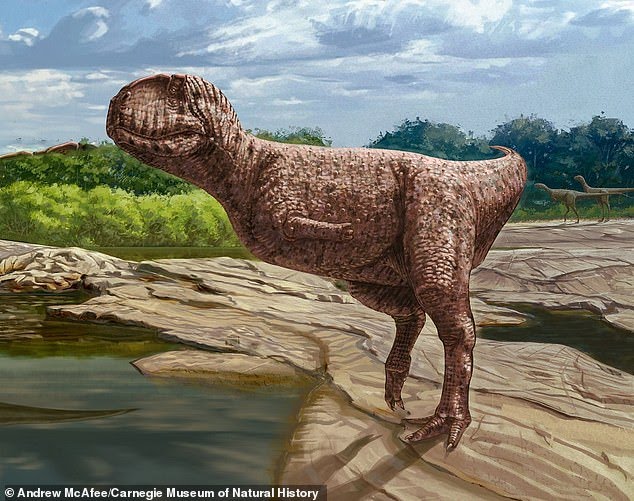
Bizarre, bulldog-faced dinosaur discovered in Egypt
A research team led by the Mansoura University Vertebrate Paleontology Center (MUVP) in Egypt has recently described a new, bizarre-looking species of meat-eating dinosaur, with a squashy face similar to a bulldog’s and tiny, stumpy arms. This species – which is yet to be named by the experts – belonged to the abelisauridae clade (a family of theropod dinosaurs that lived during the Cretaceous period), measured roughly six meters in length, and roamed the Sahara Desert around 98 million years ago.
In 2016, the scientists discovered a well-preserved vertebra from the base of this dinosaur’s neck during an expedition to the Bahariya Oasis in Egypt funded by the National Geographic Society. It is the oldest known fossil of abelisauridae from northeastern Africa, and offers new evidence that, during the mid-Cretaceous, these massive, carnivorous dinosaurs ranged across most of the northern part of the African continent.
The researchers could tell that the vertebra belonged to an abelisaurid dinosaur because it was highly similar to vertebras of other, previously discovered abelisaurids, such as those of carnotaurus and viavenator in Argentina, or majungasaurus in Madagascar. “I’ve examined abelisaurid skeletons from Patagonia to Madagascar,” said study co-author Patrick O’Connor, a paleontologist at Ohio University. “My first glimpse of this specimen from field photos left no doubt about its identity. Abelisaurid neck bones are just so distinctive.”
These are not the first dinosaur fossils found in the Bahariya Oasis. In the early 20th century, scientists discovered a variety of dinosaur bones in this region, including some belonging to the colossal sail-backed fish-eating spinosaurus. Unfortunately, all the fossils collected at this location before World War II were destroyed during an Allied bombing of Munich in 1944.
“The Bahariya Oasis has taken on near-legendary status among paleontologists for having produced the first-known fossils of some of the world’s most amazing dinosaurs,” said study co-author Matthew Lamanna, a paleontologist at the Carnegie Museum of Natural History. “But for more than three quarters of a century, those fossils have existed only as pictures in old books.”
“During the mid-Cretaceous, the Bahariya Oasis would’ve been one of the most terrifying places on the planet,” said study lead author Belal Salem, a paleontologist at MUVP. “How all these huge predators managed to coexist remains a mystery, though it’s probably related to their having eaten different things, their having adapted to hunt different prey,” he concluded.
A detailed description of this specimen can be found in the journal Royal Society Open Science.
Image Credit: Andrew McAfee, Carnegie Museum of Natural History
—
By Andrei Ionescu, Earth.com Staff Writer













